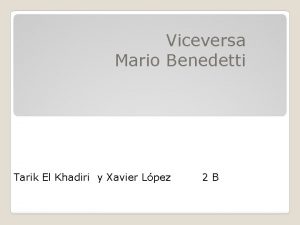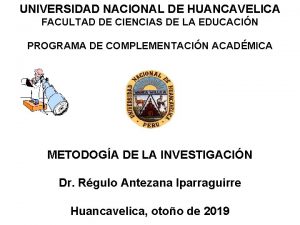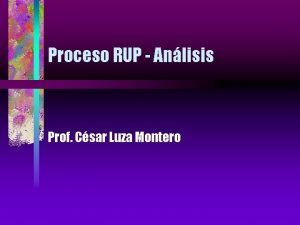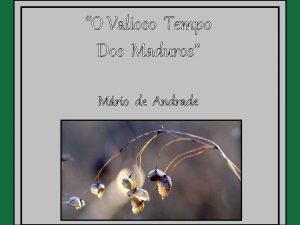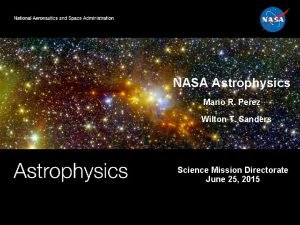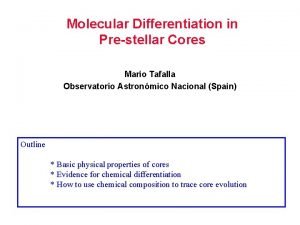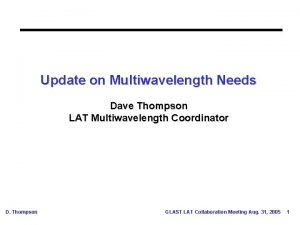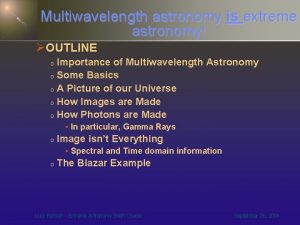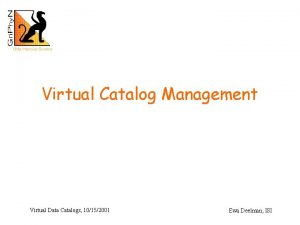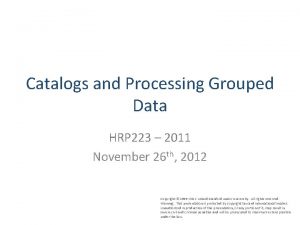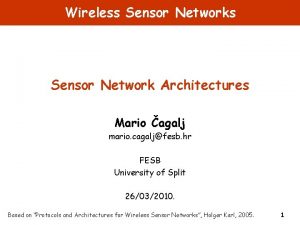Catalogs from Multiwavelength data Mario Nonino OATSINAF Outline























- Slides: 23

Catalogs from Multiwavelength data Mario Nonino (OATS-INAF)

Outline w Motivation w Methods w Applications w Example

Background w w w Study the formation and evolution of galaxies through the analysis of Luminosity, Mass functions and clustering properties. The formation, evolution and role of AGNs. What has been the star formation history of different galaxy types. What role does environment (field, groups, clusters) play? How did galaxies acquire their diversity of morphology?

Background 2 w w Issues are addressed via multiwavelength obs. campaigns: from x-ray (CXO, XMM) to UV (Galex), Optical & Nir (ground and space based), Mid and Far Infrared (ISO, Spitzer) up to mm and radio wavelengths (VLA). Examples: GOODS, COSMOS.

Background 3 w w w GOODS in short: Started as Chandra Deep Field South (1999) : one of the two deepest x-ray observations aiming at resolving the x-ray background. One of the two fields targeted (+HDFN) for deep imaging with HST+ACS, and Spitzer. w Observed with a large variety of telescopes w ESO support: ~250 nights on GOODS-South

Multiwavelength catalog: what is it ? w w w Assume we have observations of the same patch in the sky obtained with different telescopes and filters. What are the assumptions behind? Same position == same object. (not to mention time variability) Multiwavelength data: the same source as seen in different bands.

Multiwavelength catalog: how to create it w w w Same position: the input images need to be astrometrically well calibrated. Sources are detected in all images separately, and then catalogs are matched and merged. But what about sources not detected in different bands? Example drop-outs

Multiwavelength catalog: how to create it image=sources+noise w w Connoly, Szalay & Szokoly (1999): transform each image into a normal gaussian (0 mean and unit variance) With n input images you get: Simpler approach: select one band, usually a red one for the detection and all the others for measure only.

Multiwavelength catalog: generation • • • A common requirement for these steps is that the PSF effects should be taken into account! I=T P+N : the observed image (I) is the convolution of the true image (T) with the PSF (P) plus the noise (N) Different instruments/observing conditions result in different PSF

Multiwavelength catalog: generation w w w Let A the image chosen to be the reference. B is another image with a different PSF with respect to A. Then: psf_A= psf_B Kernel , which in Fourier space becomes : FFT(psf_A)=FFT(psf_B) * FFT(K) Matched_B = FFT^-1 (FFT(Original_B) * FFT(K)) High frequency components need to be smoothed (they are dominated by the noise). One of the main cons of this approach is that objects tend to be blended since most of the time A is the worst PSF image.

Aperture mag w Quick solution (but only for faint objects…)

Completeness

Magnitude w Which magnitude is to be used? w The easy way: aperture magnitude w Kron magnitude w Petrosian magnitude (Ap. J. , 209, 1976, L 1 -L 5)

Magnitude: system w From raw counts to magnitude w w The AB system: m(AB)= -2. 5 log(f) – 48. 60 (48. 57) when f is measured in erg s^-1 cm^-2 Hz^-1 The advantage of AB system is that magnitudes are directly related to physical units:

Mass estimation (e. g. Bruzual & Charlot, MNRAS, 2003, 344)

Drop outs : to high-z

Using multicolor cat. for drop out search w Color-color plots

Photometric redshift: when spectroscopy is not enough

Photometric redshift: when spectroscopy is not enough

Very distant galaxy (candidate. . . )

A really short introduction to sextractor (e. g. http: //wwwint. stsci. edu/~holwerda/Old. Homepage/se. html and the program manual)

How to run it: now the practical session. . . w sex -c <config_file> <input_image> PARAMETER parameter_value w w w w w Remember to change: CATALOG_NAME, MAG_ZEROPOINT ! The zeropoints to be used are: U: 33. 53 R: 34. 05 z (F 850 LP) : 24. 84 Ks: 26. 0 IRAC: 22. 42 To extract a meaningful catalog, remember to exclude the regions NOT in common in all bands. A quick way to do this is: display all images, taken note of the minimum and maximum good values for x and y. Then just type : cat your_catalog_name | awk ' {if ($4 > xmin && $4 < xmax && $5 > ymin && $5 < ymax) print $0}' > sub_catalog_name. To paste all catalogs together: paste cat 1 cat 2 cat 3. . > colour. cat

Preview
 Nombra los siguientes alcanos ramificados
Nombra los siguientes alcanos ramificados Staplesadvantage catalogs
Staplesadvantage catalogs Sandwich quotes examples
Sandwich quotes examples Discussion and conclusion
Discussion and conclusion Viceversa mario benedetti
Viceversa mario benedetti Masa gavran
Masa gavran Clasificacion de la ciencia segun mario bunge
Clasificacion de la ciencia segun mario bunge Mario obradović
Mario obradović Imagens de pronomes pessoais
Imagens de pronomes pessoais Jorge mario gaviria hincapie
Jorge mario gaviria hincapie Mario rosic
Mario rosic Mario montessori syn
Mario montessori syn Foda de mario vargas llosa
Foda de mario vargas llosa Cidadezinha mario quintana
Cidadezinha mario quintana Mario liani kryon
Mario liani kryon O valioso tempo dos maduros interpretação
O valioso tempo dos maduros interpretação Casamento mario quintana
Casamento mario quintana Benthosphere
Benthosphere Mario perez nasa
Mario perez nasa Mario tafalla
Mario tafalla Clasificacion de las ciencias segun mario bunge
Clasificacion de las ciencias segun mario bunge Mario penava
Mario penava Halimbawa ng awit sa paggawa
Halimbawa ng awit sa paggawa Maria giuseppa de nunzio forgione
Maria giuseppa de nunzio forgione




